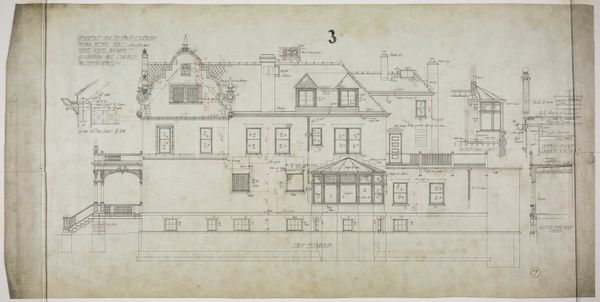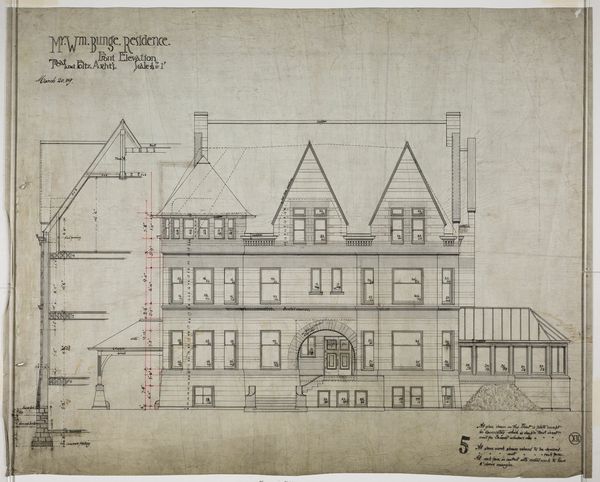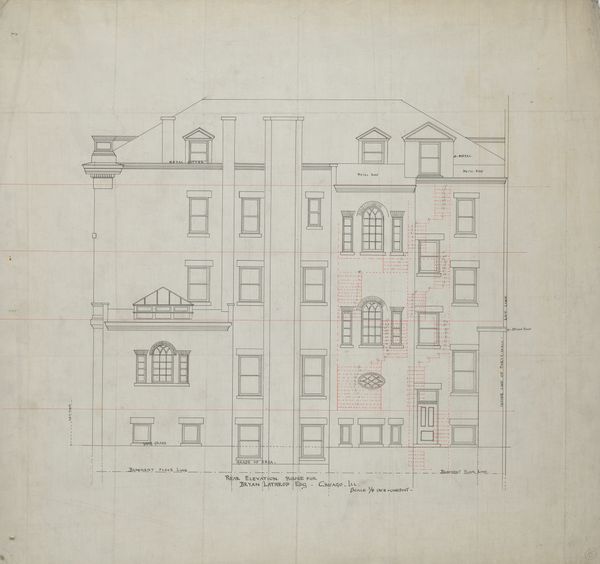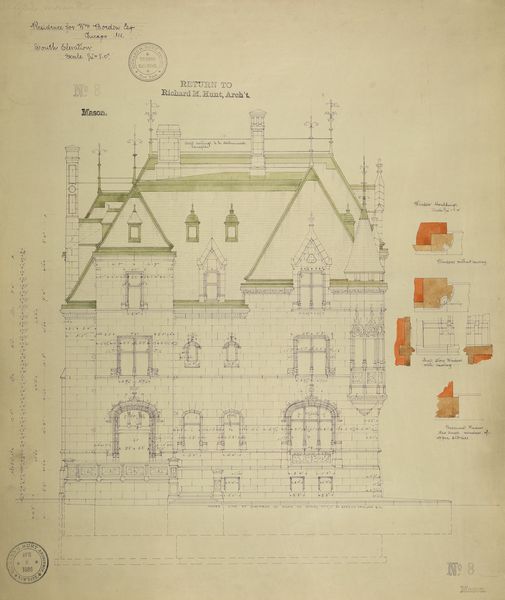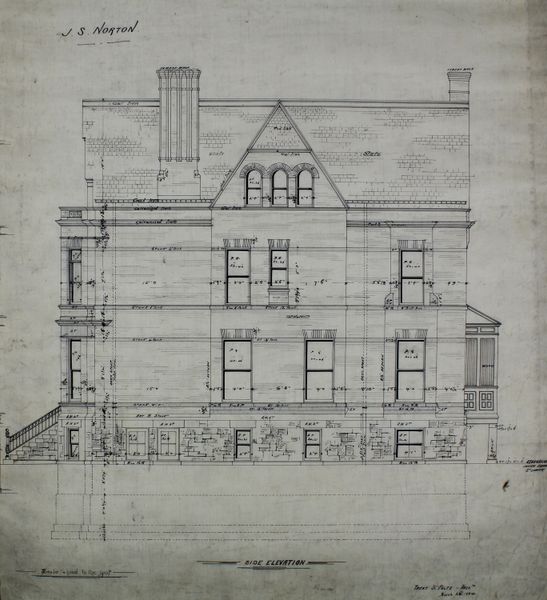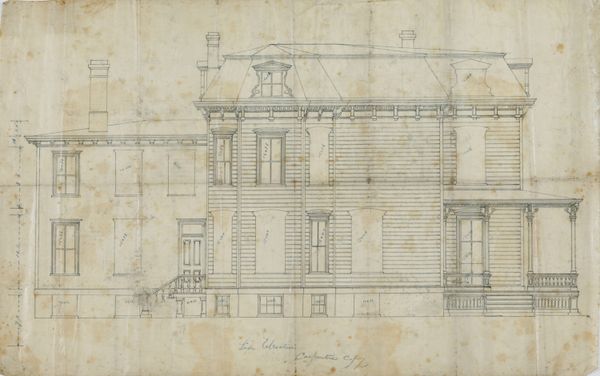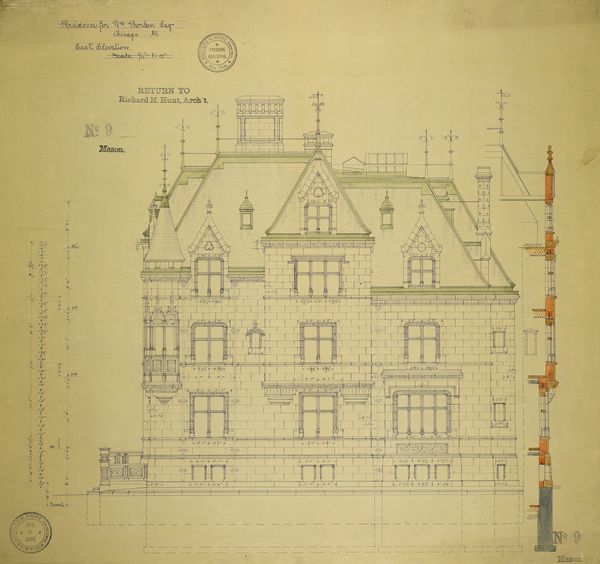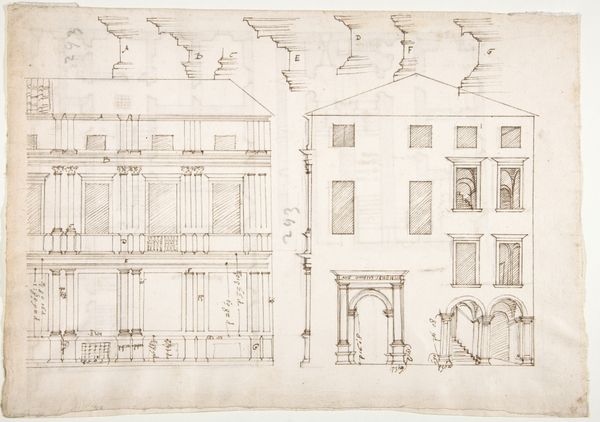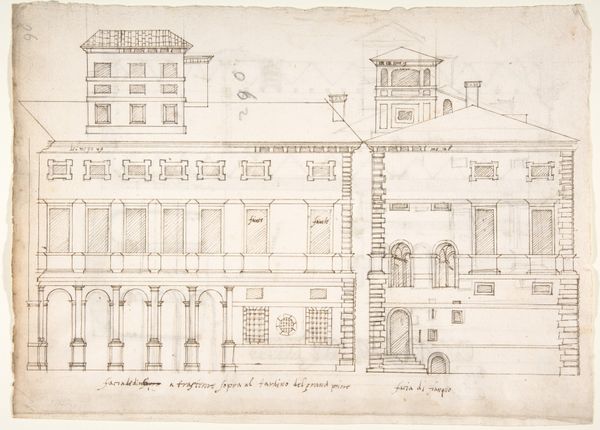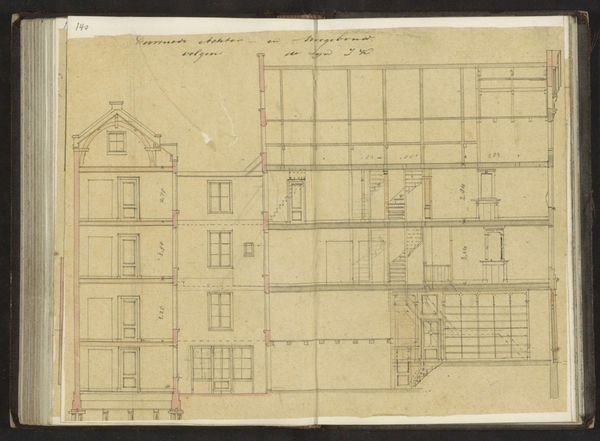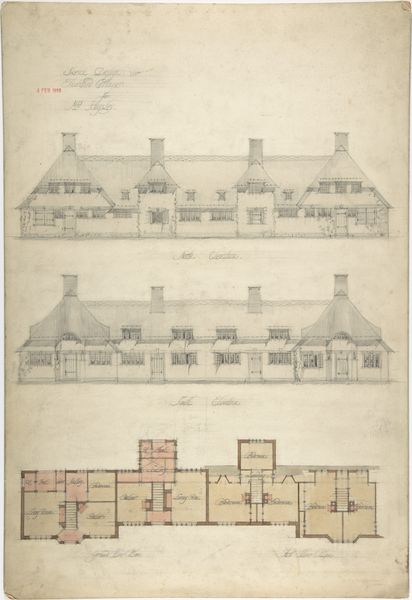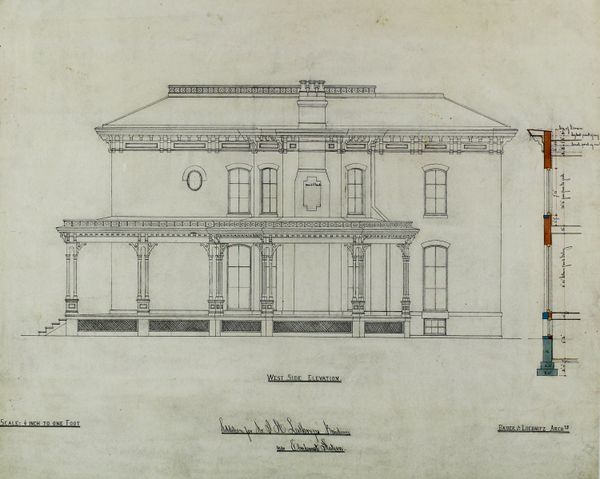
David Lewinsohn House, Chicago, Illinois, North and South Elevations 1898
0:00
0:00
drawing, pencil, architecture
#
drawing
#
pencil
#
cityscape
#
architecture
Dimensions: 46.5 × 91 cm (18 5/16 × 35 13/16 in.)
Copyright: Public Domain
Editor: Here we have Fritz Foltz’s architectural drawing, "David Lewinsohn House, Chicago, Illinois, North and South Elevations" from 1898, meticulously rendered in pencil. I am struck by the density of information; it’s almost overwhelming trying to unpack the architectural details. What do you make of this as a visual object? Curator: Let us first consider the use of line. Notice the contrast between the heavier, confident lines defining the primary forms and the delicate, almost tentative lines used for details and annotations. The relationship establishes a clear visual hierarchy; form takes precedence over superfluous adornment. Do you see how the lines function almost as pure structure here? Editor: Yes, it’s as if the line itself is doing the work of both representation and construction. Are you suggesting that the medium itself speaks to the structure of architectural thought? Curator: Precisely. Consider the repeated geometric motifs. The rectangles of the windows echo and respond to the overall rectangular form of the elevations. There's a visual rhyming at play that contributes to the drawing's overall harmony, independent of its subject matter. How do you see that pattern working here? Editor: It seems the formal repetition provides a visual framework for the more ornate decorations, like the balustrades. Almost like containing or ordering the details. Curator: An astute observation. Without this geometric underlay, the drawing could easily become chaotic. However, do these formal considerations influence your interpretation of the represented architecture? Editor: I suppose it makes me think about architecture less as habitable space and more as a study in pure form, an exploration of line, plane, and volume. I see the architect's decisions, more clearly. Curator: Indeed. By stripping away contextual concerns and focusing solely on the internal logic of the drawing, we unlock another stratum of understanding and can focus on how lines interact with the form depicted. It reminds us to appreciate the structural foundation upon which the visible artwork is built. Editor: So, from studying the lines, form and repetition we find a structure even within the artistic choice themselves? Curator: In essence, we uncover the intrinsic harmony underpinning its architectural presentation. A fitting and informative exercise.
Comments
No comments
Be the first to comment and join the conversation on the ultimate creative platform.
